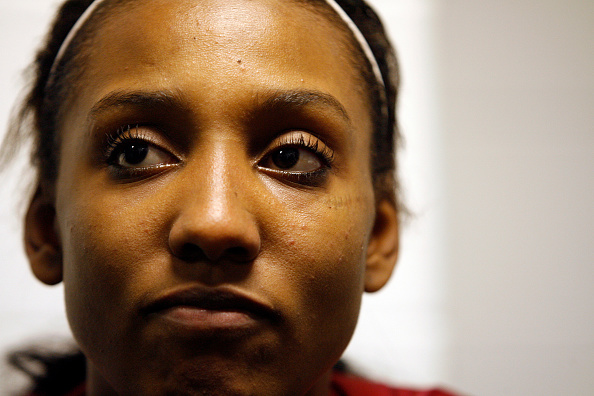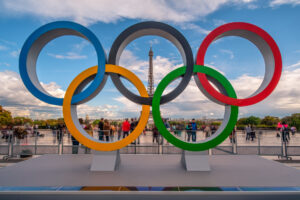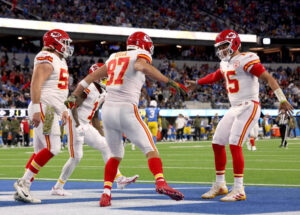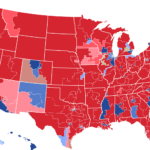Candice Wiggins recently made headlines with her San Diego Union-Tribune interview in which she claimed that she was a victim of a pervasive culture in the Women’s National Basketball Association that was “very, very harmful” to her. Wiggins has achieved her goal of getting into the public conversation in advance of her upcoming autobiography, but it has come at a terrible price.
Candice Wiggins Publicity Stunt is What’s Actually Very, Very Harmful
Wiggins claims that she was repeatedly physically and verbally bullied by other players in the league because of her gender expression and sexuality. She also stated that other players mistreated her because they were jealous of her success. While it’s certainly possible that Wiggins might have been mistreated by some players, and Wiggins herself is the only person who gets to determine her own emotions and thoughts on any subject, there are several aspects of her claims that make her assertions shaky at best.
Before progressing to analyzing why many of Wiggins’ claims don’t hold water, a possibility must be considered first. It’s possible that Wiggins could be suffering from a mental illness known as delusional disorder. Patients who suffer from the psychiatric condition often create scenarios in which they are the objects of jealous persecution by the majority of people they come into contact with. If that’s the case, then this publicity stunt isn’t that at all, but a sign that Wiggins needs to seek treatment. That’s between Wiggins and her physician, but it would explain the bizarre behavior Wiggins is exhibiting.
Assuming that Wiggins is healthy in all aspects, the next obvious conclusion to her comments and their timing is that they were made to hype her autobiography that she will be writing, which she conveniently didn’t fail to mention in her interview with the Tribune. Unfortunately for everyone involved, including Wiggins, her assertions range from ambiguous to ridiculous.
Wiggins’ Weak Explanation of her Treatment
Wiggins reports being called a b—- numerous times and intentionally shoved to the floor. She also mentions “horrible things happening to me everyday,” but doesn’t specify what those things were. Somehow, unclear because Wiggins doesn’t clarify how, she knew the exact motivation of these attacks aimed solely at her.
Wiggins presents three reasons why she was bullied by other players:
- She was a heterosexual woman in a league whose playing ranks are 98 percent filled by homosexual women. She was also more feminine in her gender expression than other players, and both of these aspects of her person made her a target of bullying.
- The league pushed players to act and play like men in order to increase the league’s success.
- Other players were jealous of her success early on in her career.
Wiggins’ assertions about the motivation behind her treatment raise more questions than answers. Asserting that 98 percent of the players in the WNBA are homosexual is ridiculous. What’s much more likely is that a lot of other players didn’t fit within Wiggins’ definition of how a woman should carry herself, dress, and speak, so in Wiggins’ mind they were labeled as homosexual. Her assertion that she is more feminine than most other players is also easily debunked, but that thought leads into her next assertion.
Wiggins played eight seasons for four different franchises in the WNBA, and saw varying degrees of success as far as attendance and fan engagement went. The Tribune article points out that league attendance and television ratings have been rising, which contradicts her assertion of a failing business. That false premise is necessary for support of Wiggins’ second claim that the league was pushing its players to “act and look like men” in order to attract more fans.
There’s a lot that Wiggins needs to clarify. How does a woman “act and look like a man?” How does a woman play basketball like a man? For that matter, how does a woman play basketball like a woman should? In what ways did the league push players to emulate their counterparts who are men?
There’s another reason why Wiggins’ assertion that the league was stifling her gender expression and sexuality seems fabricated; the experience of other players. In personal blog posts and an interview for ESPNW, several other players who played more seasons in the WNBA than Wiggins directly contradicted Wiggins’ claims. When reached for comment on the contradictions to her assertions, Wiggins declined.
Her final assertion may be the most ridiculous. It’s true that Wiggins entered the WNBA with prestige. She was a heralded player at Stanford University and taken third overall in the 2008 draft by the Minnesota Lynx. She averaged 15.7 points and nearly 28 minutes per game as a rookie, and her minutes increased over the following two seasons while she maintained a double-figures average scoring mark.
After she tore her ACL, her on-court production and time began to decline. She played for three different teams in her last three seasons, making only two starts in her final two campaigns. After averaging only 12.9 minutes and 2.8 points per game in her final season with the New York Liberty, she retired.
Yet Wiggins maintains that the bullying because of other players’ jealousy persisted even though her on-court performance, essential to keep at a high level to provide fodder for that jealousy, declined to a point where she was a seldom-used bench player. It seems that a dramatic shift in Wiggins’ minutes and production directly followed her ACL tear, although only those making the decisions about playing time in those circumstances know exactly the reasons behind the decision to reduce Wiggins’ on-court opportunities.
All of this makes a lot more sense when the possibility that Wiggins could simply be trying to create a buzz for her upcoming autobiography is taken into consideration. The tragedy is that in doing so, she has not only harmed others, but her own reputation as well.
Wiggins’ Publicity Stunt is Costly
Wiggins has created a “scandalous tell-all” buzz around her upcoming book, reminiscent of José Canseco’s Juiced. Like Canseco, Wiggins has made broad, public accusations without any context or hard evidence. The lack of documentation and contradicting testimonies raise similar questions about Wiggins’ account. If the abuse of Wiggins was so frequent and terrible, then why did no one else see it? Why did she never approach league or team officials about it?
Wiggins’ own silence on the matter could be explained by psychology. Victims of sexual harassment, the perpetrators of which hold some power over the victims if even only in the minds of the victims, often don’t report the harassment for fear of the undesired consequences. That same psychology could explain why Wiggins hasn’t said anything about her treatment until now. That doesn’t suffice to explain why none of Wiggins’ teammates or coaches took any action on it, however.
Like Canseco, it seems that Wiggins is the lone voice of truth fighting against a massive conspiracy to cover up a culture of wrongdoing. Only in Wiggins’ case, she seems to be the only victim of this wrongdoing as well.
Wiggins has traded her credibility for a chance at increased book sales. She has made the ridiculous statement that nearly all women in the WNBA are homosexual and being homosexual equates to being brash and physically abusive. In doing so, she has made herself guilty of the exact same prejudice based on gender expression and sexuality that she claims to have been a victim of. Her prejudice, however, is actually documented in her own public comments, which differentiates it from the prejudice she says she experienced. She has done far more damage than just to her own image, however.
Wiggins’ comments damage the dreams of every female basketball player in the college and high school ranks who wants to play professionally in the United States. Wiggins has told these young women that no one will care about their on-court performance. Wiggins has relayed a message that playing in the WNBA will destroy the rest of what makes each of these women her own person. Wiggins has painted the WNBA with a brush of disappointment and pain.
In the constant battle to establish the fact that it’s possible to be a woman, even a feminine and heterosexual woman, and a high-level athlete simultaneously, Wiggins has spread rhetoric to the contrary. Wiggins has thrown the league which welcomed her and allowed her to flourish before her injury and was ready to extend another contract to her despite her lack of production on the court under the proverbial bus like a speed bump on the road to book royalties.
Perhaps the most ironic thing is that Wiggins is depending on her own comments to prove false in order to make this publicity stunt worth the cost. Wiggins needs people to care about the WNBA in order to sell books claiming to expose the WNBA. If Wiggins is right, then interest in her autobiography will remain low. If Wiggins’ book sells well, then it’s evidence that the level of interest in the league isn’t as paltry as she claims.
Whether the book sells or not is only crucial to Wiggins, however. For everyone else involved in women’s basketball, the effect of her comments has already been had, and that effect is very, very harmful.













